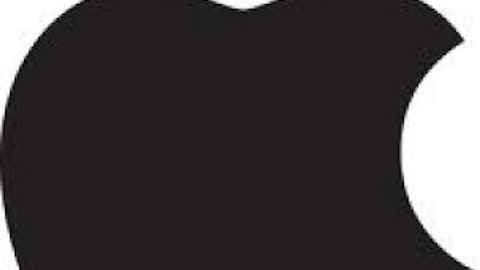I had always dismissed The Kroger Co. (NYSE:KR), which dominates many Southeastern markets, until a decade ago when Harris-Teeter came to town. The company had a good reputation, it had a large ready-to-eat section, and my kids considered it a great “Friday night delicacy” to wander a nearby two-story store and get their “night out” dinner to take home.
Then, quite suddenly, Harris-Teeter pulled out of the market. Most of their stores became Kroger locations, and I thought little about it.
This week, The Kroger Co. (NYSE:KR) got a bump in price after announcing it would buy Harris-Teeter, whose stock symbol was HTSI, for $2.4 billion, about a third more than the North Carolina company was worth when it basically put itself up for bids early this year.
Could this mean it’s time for you to personally stock up on Kroger? Could be.
The case for Kroger
Kroger is now the second-largest retailer in the U.S., behind only Wal-Mart (NYSE:WMT). You probably don’t know that because you only see the grocery stores.
But have you ever been to Fred Meyer in Portland? The department store is owned by Kroger. Ralph’s, in California? Kroger again. The Fry’s food stores in Phoenix (as distinct from the California-based electronics retailer)? Kroger again.
Each one of these chains sells a different mix of merchandise, each has a good reputation within its market, but each is actually Kroger.
The Kroger Co. (NYSE:KR) today has a market cap of $19.4 billion, and had sales of $96 billion in its most recent fiscal year. So you’re paying about $1 for each $5 of sales.
What about Wal-Mart? Or Costco?
By way of comparison, Wal-Mart Stores, Inc. (NYSE:WMT) has a market cap of $255 billion on about $470 billion in sales, a ratio of less than $1 to $2, while Costco Wholesale Corporation (NASDAQ:COST) is worth about $25 billion for its $99 billion in sales, $1 in equity for each $4 in sales.
Ah, but doesn’t Kroger live in a world of wafer-thin grocery margins? Yes. Costco made about $1.7 billion last year on its sales, or about 1.7%, while Wal-Mart made $17 billion on its sales, a margin of about 4%. Kroger had profits of $1.48 billion on its $96 billion in sales, a margin of 1.5%. It’s this margin differential that makes those larger companies worth more on the market.
Trouble is, you’re paying a lot for that small difference in margins. Wal-Mart’s Price/Earnings (P/E) multiple is about 15.2, Costco’s a whopping 25, and Kroger’s is just 12.8.
While Wal-Mart is considered the gold standard among retailer investments, the stock’s performance has actually been trailing that of Kroger since about the bottom of the last recession, in early 2009. Had you bought shares in early 2010, your Kroger investment is up 63%, your Wal-Mart 42%. Just in the last year, Kroger is up 65% against Wal-Mart’s gain of 7.4%, and in that shorter time period Kroger actually beats Costco, which has gained just 20.7% in that time.
In short, while Kroger doesn’t have the margins of Wal-Mart, it has more room to grow. While it doesn’t have the cachet of Costco, it’s about the same size, and has about the same margins.
The pros are on to Kroger. Why shouldn’t the Fools get into the action?
Bet the jockey
The man to thank in this case is David Dillon, 60, who came to Kroger when it acquired the Dillon Companies, a Kansas-based grocery chain, in 1983. Dillon became Kroger’s CEO in 2003.
Dillon has used his various brands as laboratories. He created a version of Fred Meyer under the Dillon name, for instance, in 2006, and now has five of them. Today The Kroger Co. (NYSE:KR) owns 15 different supermarket chains, six convenience store chains, three different budget food chains, and four different grocery chains, along with five different “marketplace” stores – similar to a Target – under its grocery store names, in their territories. That’s probably why you haven’t heard of the company, in comparison to its main rivals – with so many brands it flies under the radar.
In some ways, you might compare today’s Kroger to the old Federated Department Stores, which eventually became Macy’s. The difference is that Kroger is in niches that are expanding, and its stores are generally profitable. When something isn’t working, Dillon dumps it. He sold the Hilander’s chain in 2011, and got out of the Bell Markets and Cala Foods in northern California the same year.
Dillon gives his managers autonomy, and he pays his people. Three-quarters of Kroger employees belong to a union, the United Food and Commercial Workers.
The Foolish bottom line
Despite its gains during the last few years, The Kroger Co. (NYSE:KR) remains a bargain compared to other large retailers. Since it does business under many different names, it has many different ways in which to grow. It has a well-respected grocery man at the top, and it’s building a pipeline of like-minded people who can continue growing the business after he retires, in about five years.
Wall Street is on to this story. That’s why Kroger shares are rising faster than those of its peers. Shouldn’t it be on your radar too?
Dana Blankenhorn owns shares of Costco Wholesale (NASDAQ:COST). The Motley Fool recommends Costco Wholesale. The Motley Fool owns shares of Costco Wholesale.
The article Attention Kroger Shoppers originally appeared on Fool.com.
Copyright © 1995 – 2013 The Motley Fool, LLC. All rights reserved. The Motley Fool has a disclosure policy.





